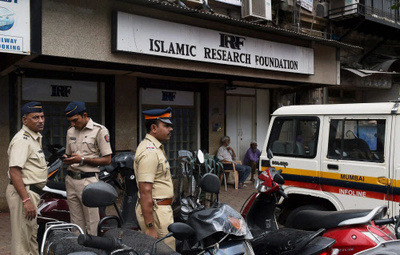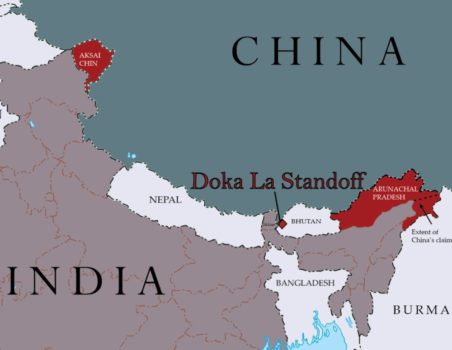Late Syama Prasad Mookerjee left for his heavenly abode on June 23, 1953. Even after 65 years to the sordid saga, Syama Prasad Mookerjee’s death remains an unsolved mystery. The roots of the Bharatiya Janata Party or BJP lies in the hands of Syama Prasad Mookerjee, so does India’s.
[amazon_link asins=’9385289217,9385493884,B077HSGM26′ template=’ProductCarousel’ store=’wwwrtiwalain-21′ marketplace=’IN’ link_id=’637b0ac8-7671-11e8-a19c-f91afea912c0′]
RTIwala Trending: Dr. Syama Prasad Mookerjee was a leading intellectual academician and educationist of his time. He served as the Minister for Industry and Supply under Jawaharlal Nehru’s cabinet. A politician who lived 52 years, made a 14-year short carrier and had created a history; died on 23rd June 1953, in Srinagar. A leader who is known that if his ideas had been implemented at that period it would have demonstrated a new and strong future of the nation. Let’s take a sneak peak of his life, profession and uncountable contributions made by him.
Also Read: On Gandhi Jayanti, Rw Reveals Top 10 Unknown Facts of Mahatma Gandhi
“Whatever work you undertake, do it seriously, thoroughly and well; never leave it half-done or undone, never feel yourself satisfied unless and until you have given it your very best. Cultivate the habits of discipline and toleration. Surrender not the convictions you hold dear but learn to appreciate the points of view of your opponents.”
-Dr. Syama Prasad Mookerjee
Early life and Education:

Born and brought up in a Bengali Hindu family on 6th July 1901 in Calcutta (Kolkata). His father Ashutosh Mookerjee served as a judge in the High Court of Calcutta and mother Jogamaya Devi Mukherjee. He started his schooling from Bhawanipur’s Mitra Institution and later moved on to Presidency College. He was teacher’s favorite and secured the first position in English graduation in 1921. He got married on 16th April 1922 to Sudha Devi. After marriage, he continued his studies and completed his M.A. in 1923 and further pursued B.L. in 1924.
Also Read: Top 10 Most Influencing Chief Ministers on Twitter
Dr. Syama Prasad Mookerjee: Career in Politics
1] Like father, like son
His father also held the position of Vice-Chancellor of the University of Calcutta and earned the title ‘the lion of Bengal’. Like his father, Dr. Syama Prasad Mookerjee, too, was a great educationist and served as the youngest Vice-Chancellor of the university from 1934 to 1938.
2] A politician with a golden heart
Dr. Syama Prasad Mookerjee joined politics in the first half of the twentieth century where he played a pivotal role concerning education system in India and not politics. He was against the Diarchy System of education at that time that was introduced by Montague-Chelmsford Reforms. Because of this he resigned his seat in the Council and to come back as an independent candidate.
Also Read: On Gandhi Jayanti, Rw Reveals Top 10 Unknown Facts of Mahatma Gandhi
3] Leader of the Hindu Mahasabha
He became the President of the Hindu Mahasabha in 1939 and had organized a large-scale relief work for the drought-affected in Bengal.
4] Noakhali Riots changed his ideology
Noakhali riots occurred in 1946 in the Chittagong division of East Bengal (now Bangladesh) was one of the worst events ever happened that involved forced conversions, arson, looting etc. And another was the Kolkata riots the same year. He demanded the partition of Bengal for preventing the inclusion of Hindu-majority areas from Muslim-dominated East Pakistan.
[amazon_link asins=’8122316085,0670058165,8174362053,014342565X,0143429809′ template=’ProductCarousel’ store=’wwwrtiwalain-21′ marketplace=’IN’ link_id=’9a963f8c-7671-11e8-abd4-f7a615181828′]
5] After Independence being Nehruvian
He designed the first Industrial policy of India, an able administrator and gained admiration from the government and the Congress. But he dared to challenge Nehru’s political methods by drawing an alternative framework for the civilizational fountains of the Indian experience. He was strongly against the Nehru-Liaqat Ali Pact, any agreement with Pakistan government and so he resigned from the Cabinet.
Also Read: Top 10 Most Influencing Chief Ministers on Twitter
6] Founder of Bharatiya Jan Sangh and Crusader of Kashmir
Before resigning from Nehru cabinet he was completed devoted to RSS and he established The Bharatiya Jan Sangh in 1951; the ideological predecessor of the Bhartiya Janta Party (BJP). He was against the Kashmir law and entered there illegally and died on 23rd June under mysterious circumstances in prison.
7] His support to Nationalist Scholars
He was in favor of scholars who wished to do research in Indian history from an Indian point of view. He opened the first museum of the Indian history, culture, and archaeology in the university and invited international universities to send their students to study the Indian civilization, culture, and Sanskrit. He invited Rabindranath Tagore to deliver the convocation addressed in Bengali.








